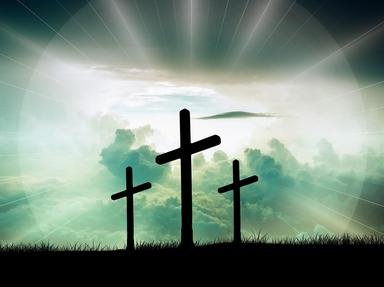Quiz Answer Key and Fun Facts
1. Esther 1:1 in the NKJV tells of Ahasuerus ruling the vast area from India to Ethiopia. (In the NIV, the king is known as Xerxes.) According to Esther 10:3, who rose to become second in command of the empire?
2. Scripture states Jesse was the father of David as well as eight other sons. According to 1 Samuel 17:13, the firstborn was Eliab. Who was the second oldest?
3. According to 1 Chronicles 3:1, David had six sons born to him by different wives in Hebron. The firstborn was Amnon the son of Ahinoam of Jezreel. Who was the second son?
4. Wells were vitally important in Biblical times with Beer Lahai Roi being the first well in the Bible referred to by name, as per Genesis 16:14. What was the name of the second well specifically mentioned by name, as per Genesis 21:31?
5. Samson was a judge of Israel who deliberately ended his life and in the process killed a large number of Philistines. Who was the second person to commit suicide in the Bible? (1 Samuel 31:4)
6. Corinthians is a New Testament book that has two parts to it. In 1 Corinthians, Paul mentions the name Sosthenes in the salutation of the letter. However, in 2 Corinthians, the name Sosthenes does not appear in the salutation, but instead there's the name of a young worker in the early church. What is the name that appears in the salutation of 2 Corinthians 1:1?
7. In the New Testament, Simon of Cyrene is the first character from Africa. Who was the second character from Africa?
8. According to Scripture, Peter denied knowing Jesus three times just prior to the crucifixion. Matthew 26:69 states Peter issued the first denial to a servant girl. His second denial is recorded in Matthew 26:71. Who did Peter issue his second denial to?
9. According to the 20th chapter of John, Mary Magdalene was the first person to see Jesus after the resurrection. Who appears to have been the second person to see Jesus, as per Matthew 28:1-9?
10. Revelation 8:7 to 10:11 tells of seven angels who blew seven trumpets. According to Scripture, when the first angel sounded his trumpet, there came hail and fire mixed with blood, and it was hurled down on the earth. A third of the earth was burned up, a third of the trees were burned up, and all the green grass was burned up. What happened when the second angel sounded a trumpet?
Source: Author
Cowrofl
This quiz was reviewed by FunTrivia editor
CellarDoor before going online.
Any errors found in FunTrivia content are routinely corrected through our feedback system.
